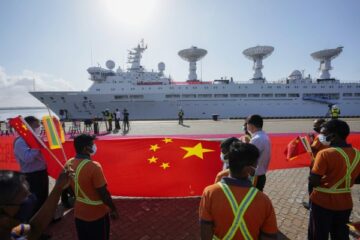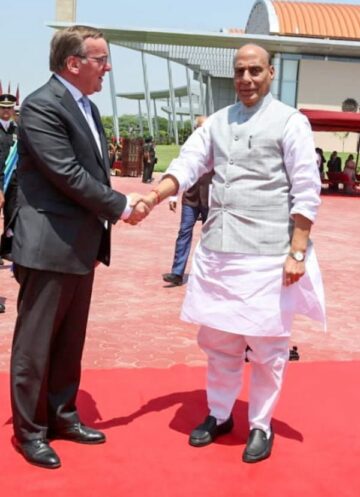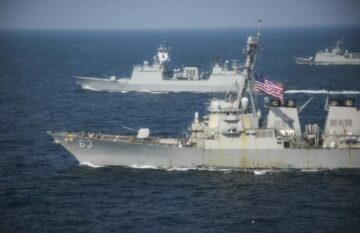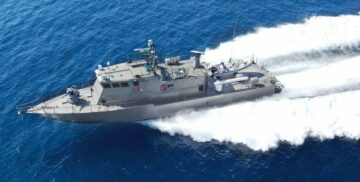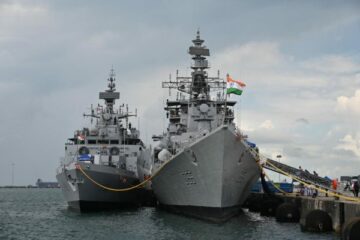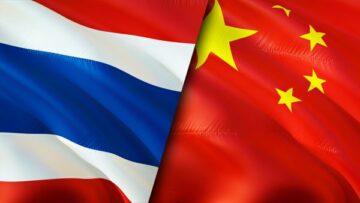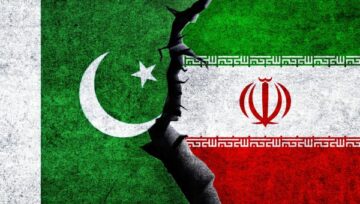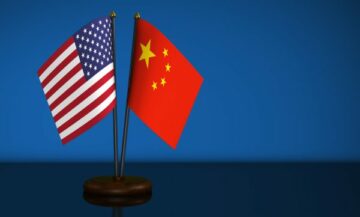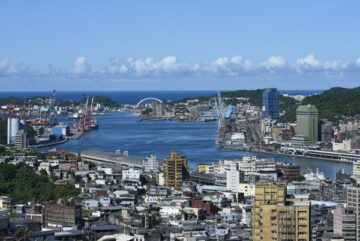
Having declared a state of “internal armed conflict” against brutal criminal organizations, newly-elected Ecuadorian President Daniel Noboa needed cash and new equipment for the armed forces, which were still reliant mainly on legacy and secondhand equipment. In the face of this challenge, Noboa made an offer that was unprecedented for any Latin American head of state: Ecuador would sell an assortment of its legacy Russian and Soviet equipment to the United States, in exchange for $200 million worth of new U.S. gear. The deal appeared a win-win for both parties; Ecuador would get a much-needed infusion of modern gear while the United States would have yet another channel through which to supply military aid to Ukraine by passing along the old Ecuadorian systems.
However, despite Noboa’s repeated public endorsement of the plan, Quito eventually backtracked amid economic pressure from Russia.
The incident underscored two key dynamics at play in the Latin American security and defense sector today. First, Moscow continues to exert influence over its current and former arms clients. Second, even if the deal had progressed, there is reason to doubt the United States would have been able to deliver the sorely needed equipment in time for it to make an immediate difference in Ecuador’s security situation. While U.S. military equipment is by and large regarded as the gold standard by partner militaries in Latin America, delays and backlogs in equipment deliveries have plagued the United States in its dealings with countries across the hemisphere. For instance, delivery of a King Air turboprop patrol plane to Panama was delayed over a year after the sale was approved, moving forward only with the intercession of then-President Laurentino Cortizo.
In addition to the reputation for delays, U.S. military equipment also suffers from a parallel reputation as being expensive. By contrast, competitors such as Russia, and increasingly China, have garnered a reputation as providing less sophisticated, but nevertheless reliable and rugged kit quickly and on the cheap. Just days after the fatal shooting of a Panamanian policeman, for instance, the Chinese embassy in Panama announced a donation of 6,000 ballistic vests to the country, drawing a stark contrast to U.S. material assistance, which tends to become mired in red tape and procedural heel-dragging.
Whereas Russia’s presence in the Latin American arms market is declining and it is unlikely to maintain its grip due to its focus on the war in Ukraine, China appears poised to capture much of Moscow’s former share. China has already made important advances in Bolivia, Ecuador, and Peru, in some cases at the direct expense of the United States such as when Peru canceled its contract with Northrop Grumman in 2012 for air defense missiles and turned to the China Precision Machinery Import-Export Corporation instead.
China is home to three of the 10 largest arms manufacturers by revenue, and while Beijing’s provocations in its neighborhood have raised international opprobrium, Chinese arms are not subject to the same degree of international sanctions Russian exports have faced since 2022. At the same time, Latin American militaries are looking to make important investments in their military modernization. Peru’s defense acquisitions budget more than doubled in 2023, while Brazil is embarking on a lengthy process of modernization across its service arms, a process that has considered Chinese SH-15 self-propelled guns.
Perhaps the most notable episode of China-U.S. competition in the Latin American defense space could be observed in Argentina’s multi-year search for new fighter jets for its air force. This eventually would pit the joint Chinese-Pakistani JF-17 fighter against the U.S.-made F-16. While ultimately the F-16 prevailed, U.S. handwringing over protests by the United Kingdom created delays and uncertainty, which brought Argentina back to Beijing on several occasions. The incident thus encapsulated the still-privileged position U.S. arms hold in the region, but also how quickly this advantage may dissipate.
Contracts for new artillery systems, armored vehicles, patrol vessels, and aircraft are not inconsequential. Each entails a multi-year partnership between the supplier and recipient for maintenance, sustainment, and repair. If China is able to leapfrog the United States by offering more cost-competitive systems with fewer bureaucratic hoops to jump through, Beijing could rapidly increase its influence over Latin American countries’ defense policy.
For the United States to succeed in weakening Russian influence, and curtailing China’s advances, in the Latin American arms market, it will need to engage partners. In particular, like-minded countries with robust defense sectors capable of delivering quickly and within budget constraints should be prime targets for close cooperation. Among these, South Korea stands out as a key U.S. ally with a growing reputation for delivering quality military hardware on competitive timelines.
Enter South Korea
In a situation where Chinese and Russian arms sales are gaining popularity in Latin America and acquiring U.S. equipment takes far too long, South Korea, a reliable U.S. ally with advanced military technology and manufacturing capability, can serve as a potential partner in Latin America, providing timely mid-tier weapons at an affordable price and counterbalancing Russian and Chinese arms exports in the region.
South Korea has already demonstrated its potential to serve such a role, as exemplified by its comprehensive $13.7 billion arms deal – including 980 K2 tanks, 648 self-propelled K9 armored howitzers, 48 FA-50 fighter jets and 288 Chunmoo launchers – with Poland in 2022. One of the reasons Poland chose South Korean firms as its strategic partners was because of their capacity for speedy manufacturing. As South Korea is technically still at war with its northern neighbor, defense contractors in Seoul maintain their production lines of conventional weapons to equip the more than 3.6 million military personnel in their country. Indeed, South Korea was able to send the first shipment of 10 K2 tanks and 24 K9 howitzers to Poland just a few months after the deal.
This is in stark contrast with the U.S. arms industry, which faces production delays and bureaucratic impediments, making it so even key U.S. allies struggle to take possession of new equipment in a timely manner. Timeliness is therefore one of the reasons why South Korea can be a good alternative in Latin America.
Another advantage of South Korean weapons is their interoperability with U.S. equipment. Because of Seoul’s long-standing military alliance with Washington, both countries conduct combined exercises biannually to confirm interoperability and ensure the readiness of their military assets. As South Korean forces will jointly fight together with the U.S. forces in a contingency, and there is a chance that the two countries may share their weapons, South Korea is continuously refining its weapons systems to align with that of the United States. For instance, K2 rifles can be used with the standard M16 magazines and South Korea’s K-9 self-propelled howitzer is compatible with the American ammunition.
The FA-50 jet also shares a great number of similarities with the F-16, and it was reported that a pilot familiar with one aircraft can learn to operate the other in just six hours. Indeed, the Argentine air force initially sought to buy the FA-50 in 2019 as part of their fighter modernization program, though the sale was ultimately blocked by the United Kingdom. Such adaptability of the Korean weapons can be a significant advantage because it not only provides Latin American countries with an initial step toward transitioning to U.S. weapon systems but also allows some time for the U.S. defense industry to gear up before fully supplying its arms to Latin American countries without losing market share to the Chinese companies.
In light of these advantages, there is already a growing trend of South Korea’s arms exports and defense cooperation with Latin American countries.
In late April, Peru signed a significant $460 million deal with South Korea’s Heavy Hyundai Industries (HHI). This contract, reportedly the largest defense industry export from South Korea to Central and South America, includes one frigate, two landing craft units, and an offshore patrol vessel, all expected to be delivered by 2029. In the following month, South Korea’s Hyundai Rotem also announced a $60 million deal to sell 30 8×8 White Tiger armored vehicles to the Peruvian Army.
Colombia has also been enhancing its military collaboration with South Korea. In February, the two nations signed an agreement to mutually recognize the airworthiness certification of their military aircraft. This agreement facilitates the potential export of Korean FA-50 jets to Colombia, which is looking to replace its aging fighter fleet.
Most recently, South Korean defense companies were active participants at the International Air and Space Fair (FIDAE) in Santiago, Chile. Here, at one of the region’s premier defense expos, Hyundai Wia Corp. showcased its mobile artillery system, aiming to expand into the Chilean market, supported by a defense cooperation agreement between South Korea and Chile signed in 2019.
These deals and collaborations reflect South Korea’s expanding role as a key arms exporter to Latin America, driven by advanced technology, competitive pricing, and strategic defense agreements.
Bolstering Cooperation
While South Korea is making impressive strides in its dealings with Latin American armed forces, the United States can augment these efforts in important ways. Across the Western Hemisphere, the United States enjoys robust military-to-military partnerships, granting Washington valuable insights into the kinds of capabilities and equipment Latin American militaries are looking to acquire. Closer South Korea-U.S. cooperation in this regard could help connect Korean manufacturers to other potential clients, and ideally help Seoul to surpass Beijing as the first country to call for militaries looking to modernize.
Strengthening this cooperation will take time and effort however. Especially for the United States, the largest arms dealer in the world, it may seem counterintuitive to champion another country’s industry, even that of a staunch ally. However, the aforementioned interoperability between many South Korean and U.S. systems means that even if Washington loses out on a contract, U.S. manufactures can still come into play further along. Furthermore, in specific sectors like shipbuilding, where U.S. companies are either absent entirely or otherwise focused primarily on producing to meet domestic demand, South Korea’s entry may be an unambiguous positive.
Seoul, for its part, can strengthen its hand as a defense partner for the region by increasing co-development and technology-sharing efforts with Latin American countries. This is already on display in the naval sector as Hyundai is working in partnership with Peru’s state-owned shipyard to construct the new vessels locally in Lima. Elsewhere in the hemisphere, technological cooperation and co-development have been well-received, such as the joint Swedish-Brazilian effort to build the Brazilian air force’s new Gripen fighters domestically.
While South Korea’s history of defense technical cooperation has not been without its challenges, Seoul has a wealth of experience to draw upon. Bolstering this kind of cooperation could not only allow South Korea to become more competitive in the Latin American arms space but prove a boon for regional economies and technical capability as well.
- SEO Powered Content & PR Distribution. Get Amplified Today.
- PlatoData.Network Vertical Generative Ai. Empower Yourself. Access Here.
- PlatoAiStream. Web3 Intelligence. Knowledge Amplified. Access Here.
- PlatoESG. Carbon, CleanTech, Energy, Environment, Solar, Waste Management. Access Here.
- PlatoHealth. Biotech and Clinical Trials Intelligence. Access Here.
- Source: https://thediplomat.com/2024/06/south-koreas-role-in-countering-chinese-and-russian-arms-sales-in-latin-america/
- :has
- :is
- :not
- :where
- $UP
- 000
- 10
- 2012
- 2019
- 2022
- 2023
- 24
- 288
- 30
- 48
- 6
- 7
- a
- Able
- absent
- acquire
- acquiring
- acquisitions
- across
- active
- adaptability
- addition
- advanced
- Advanced Technology
- advances
- ADvantage
- advantages
- affordable
- After
- against
- Aging
- Agreement
- agreements
- Aid
- Aiming
- AIR
- Air Force
- aircraft
- align
- All
- Alliance
- allow
- allows
- Ally
- along
- already
- also
- alternative
- america
- American
- Amid
- ammunition
- among
- an
- and
- announced
- Another
- any
- appeared
- appears
- approved
- April
- ARE
- Argentina
- Argentine
- armed
- arms
- Army
- AS
- Assets
- Assistance
- assortment
- At
- augment
- back
- BE
- because
- become
- been
- before
- Beijing
- being
- between
- blocked
- bolstering
- both
- both parties
- Brazil
- Brazilian
- brought
- budget
- bureaucratic
- but
- by
- call
- CAN
- capabilities
- capability
- capable
- Capacity
- capture
- cases
- Cash
- central
- Certification
- challenge
- champion
- Chance
- Channel
- cheap
- Chile
- China
- Chinas
- chinese
- chose
- clients
- Close
- closer
- CO
- collaboration
- collaborations
- Colombia
- combined
- come
- Companies
- compatible
- competition
- competitive
- competitors
- Conduct
- Confirm
- Connect
- constraints
- construct
- continues
- continuously
- contract
- contractors
- contrast
- conventional
- cooperation
- Corp
- CORPORATION
- could
- countering
- countries
- country
- country’s
- craft
- created
- Criminal
- Current
- Daniel
- Days
- deal
- dealer
- Deals
- declared
- Defense
- Degree
- delays
- deliver
- delivered
- Deliveries
- delivering
- delivery
- Demand
- demonstrated
- Despite
- difference
- direct
- Display
- Domestic
- domestically
- doubt
- draw
- drawing
- driven
- due
- dynamics
- each
- Economic
- economies
- Ecuador
- effort
- efforts
- either
- elsewhere
- embarking
- encapsulated
- Endorsement..
- engage
- enhancing
- enjoys
- ensure
- entails
- entirely
- entry
- episode
- equip
- equipment
- especially
- Even
- eventually
- exchange
- exemplified
- exercises
- Expand
- expanding
- expected
- expense
- expensive
- experience
- export
- exports
- expos
- Face
- faced
- faces
- facilitates
- fair
- familiar
- far
- February
- few
- fewer
- fight
- fighters
- firms
- First
- FLEET
- Focus
- focused
- following
- For
- Force
- Forces
- Former
- Forward
- from
- fully
- further
- Furthermore
- gaining
- garnered
- Gear
- get
- Gold
- Gold Standard
- good
- granting
- great
- Growing
- GUNS
- had
- hand
- Hardware
- Have
- head
- heavy
- help
- here
- history
- hold
- Home
- HOURS
- How
- However
- HTTPS
- Hyundai
- ideally
- if
- immediate
- important
- impressive
- in
- incident
- includes
- Including
- increasing
- increasingly
- indeed
- industries
- industry
- influence
- infusion
- initial
- initially
- insights
- instance
- instead
- International
- Interoperability
- into
- Investments
- IT
- ITS
- Jets
- joint
- jpg
- jump
- just
- Key
- Kind
- kinds
- King
- Kingdom
- kit
- korea
- Korea’s
- Korean
- landing
- large
- largest
- Late
- Latin
- latin america
- Latin American
- laurentino cortizo
- LEARN
- Legacy
- less
- light
- like
- like-minded
- lima
- lines
- Long
- long-standing
- looking
- Loses
- losing
- machinery
- made
- magazines
- mainly
- maintain
- maintenance
- make
- Making
- manner
- Manufacturers
- manufacturing
- many
- Market
- market share
- material
- May..
- means
- Meet
- militaries
- Military
- million
- mired
- missiles
- Mobile
- Modern
- modernization
- modernize
- Month
- months
- more
- Moscow
- most
- moving
- much
- much-needed
- multi-year
- mutually
- Nations
- Need
- needed
- neighbor
- Nevertheless
- New
- notable
- number
- observed
- occasions
- of
- offer
- offering
- Old
- on
- ONE
- only
- operate
- or
- organizations
- Other
- otherwise
- out
- over
- Panama
- Parallel
- part
- participants
- particular
- parties
- partner
- partners
- Partnership
- partnerships
- Passing
- patrol
- Personnel
- peru
- peruvian
- PHP
- pilot
- PIT
- plan
- plane
- plato
- Plato Data Intelligence
- PlatoData
- Play
- poised
- Poland
- policy
- popularity
- position
- positive
- possession
- potential
- potential clients
- Precision
- premier
- presence
- president
- pressure
- price
- pricing
- primarily
- Prime
- procedural
- process
- producing
- Production
- Program
- progressed
- Protests
- Prove
- provides
- providing
- public
- quality
- quickly
- raised
- Readiness
- reason
- reasons
- recently
- recognize
- Red
- refining
- reflect
- regard
- regarded
- region
- regional
- reliable
- reliant
- repair
- repeated
- replace
- reportedly
- reputation
- revenue
- robust
- Role
- Russia
- russian
- s
- sale
- sales
- same
- Sanctions
- Search
- Second
- sector
- Sectors
- security
- seem
- sell
- send
- Seoul
- serve
- service
- several
- Share
- Shares
- shooting
- should
- signed
- significant
- similarities
- since
- situation
- SIX
- So
- some
- sophisticated
- South
- South America
- South Korea
- south korean
- soviet
- Space
- specific
- speedy
- standard
- stands
- stark
- State
- state-owned
- States
- Step
- Still
- Strategic
- strategic partners
- Strengthen
- strides
- Struggle
- succeed
- such
- Suffers
- supplier
- supply
- supplying
- Supported
- surpass
- system
- Systems
- Take
- takes
- Tanks
- tape
- targets
- Technical
- technically
- technological
- Technology
- tends
- than
- that
- The
- the joint
- the United Kingdom
- the world
- their
- There.
- therefore
- These
- this
- though?
- Through
- Thus
- Tiger
- time
- timelines
- timely
- to
- today
- together
- too
- toward
- transitioning
- Trend
- Turned
- two
- u.s.
- Ukraine
- Ultimately
- Uncertainty
- underscored
- United
- United Kingdom
- United States
- units
- unlikely
- unprecedented
- upon
- used
- Valuable
- Vehicles
- Vessel
- vessels
- war
- War in Ukraine
- was
- washington
- ways
- Wealth
- Weapons
- WELL
- were
- Western
- when
- which
- while
- white
- why
- will
- Win-Win
- with
- within
- without
- working
- world
- worth
- would
- WSJ
- year
- year after
- yet
- zephyrnet


